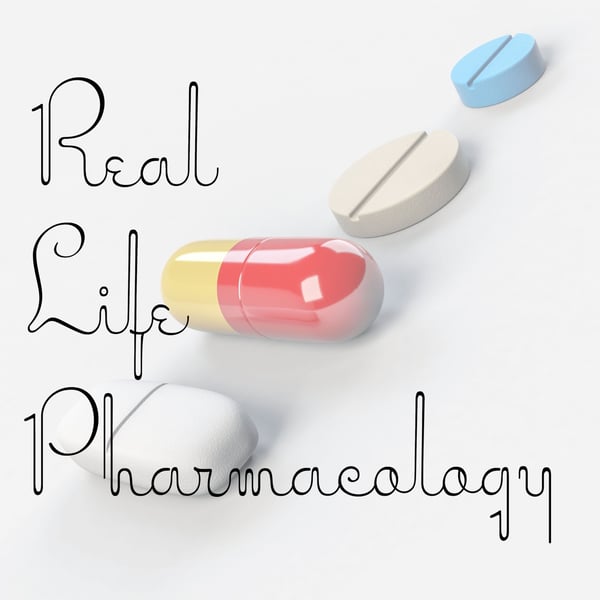Top 200 Drugs Podcast – Medications 136-140
Real Life Pharmacology - Pharmacology Education for Health Care Professionals
Eric Christianson, PharmD; Pharmacology Expert and Clinical Pharmacist
5 • 716 Ratings
🗓️ 12 December 2024
⏱️ 21 minutes
🧾️ Download transcript
Summary
Cinacalcet is a calcimimetic medication that can be helpful in hyperparathyroidism and useful for managing hypercalcemia.
Solifenacin is a urinary antimuscarinic used primarily for overactive bladder. It is an anticholinergic medication that can be problematic in our geriatric patients.
Haloperidol is a first generation antipsychotic that has a high incidence of EPS relative to many newer antipsychotics.
Hydrocotorisone is one of the most common topical corticosteroids that can be used to reduce inflammation and redness from skin reactions.
Insulin NPH is an intermediate acting insulin that is meant to be given on a routine basis. It has fallen out of favor since insulin glargine and other long acting agents allow for few injections and more stable kinetics.
Transcript
Click on a timestamp to play from that location
| 0:00.0 | Hey, all, welcome back to the real-life pharmacology podcast. I'm your host, pharmacist, Derek Christensen. |
| 0:05.2 | Thank you so much for listening today. Continuing on with the top 200 drugs, we've got number 136, |
| 0:12.1 | and that is Cinnacelset. Brand name of this medication is Sensipar. This is what's classified as a |
| 0:19.1 | calcimimimetic medication. |
| 0:21.9 | Ultimately, what we're trying to do with this medication is treat primary hyperparathyroidism, |
| 0:29.2 | secondary hyperthyroidism. |
| 0:31.2 | I would say more typically secondary hyperthyroidism. |
| 0:36.5 | But elevations in calcium can occur from this disease state, |
| 0:42.4 | particularly in patients with KD, and this medication can treat those higher calcium levels. |
| 0:51.7 | And mechanistically, it does this by increasing sensitivity of calcium receptors, |
| 0:56.4 | and ultimately this is going to cause that serum calcium to go down as that calcium is |
| 1:05.2 | uptaken into the cells. Okay, so that's ultimately going to reduce calcium and going to reduce PTH there as well. |
| 1:14.7 | Some warnings, some things to pay attention to. |
| 1:18.3 | There have been arrhythmias associated basically with the drug working too well if we're not |
| 1:25.2 | paying attention to lab work. |
| 1:27.4 | So if that calcium level drops too far, we can run into a situation of causing life-threatening |
| 1:33.7 | arrhythmias as well as life-threatening hypokalcemia associated with that. |
| 1:40.1 | So adverse effect profile, as you could imagine, just alluded to that, we can drop that calcium |
| 1:45.0 | too far, cause low calcium levels. |
| 1:48.5 | Dropping blood pressure can happen with this medication as well. |
| 1:53.5 | And GI bleed has been associated with this medication as well. |
| 1:57.8 | So think of it along the lines of, you know, inseds, for example. |
... |
Transcript will be available on the free plan in -106 days. Upgrade to see the full transcript now.
Disclaimer: The podcast and artwork embedded on this page are from Eric Christianson, PharmD; Pharmacology Expert and Clinical Pharmacist, and are the property of its owner and not affiliated with or endorsed by Tapesearch.
Generated transcripts are the property of Eric Christianson, PharmD; Pharmacology Expert and Clinical Pharmacist and are distributed freely under the Fair Use doctrine. Transcripts generated by Tapesearch are not guaranteed to be accurate.
Copyright © Tapesearch 2025.

